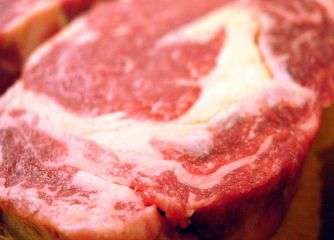DNA analyses may help select the best breeds by predicting how beef will taste once it reaches our palate

Using state-of-the art genomics to predict whether a piece of beef will be tender enough may sound excessive. Until now, the meat industry has been using low-tech methods to assess beef quality, based on carcass weight, hanging method and pattern of muscle fat stripes, also known as marbling. However, traditional approaches may lack competitiveness at an industrial scale. "The meat industry needs more precise and consistent ways to predict the quality of beef before it reaches the shelves," Geraldine Duffy, tells youris.com. She is the Head of food safety at the Teagasc Food Research Centre in Dublin, Ireland, who coordinates the EU-funded project ProsafeBeef.
As a part of the project, about 3,000 genes involved in muscle biology were selected by Jean-François Hocquette and his group at the Herbivore Research Unit of the National Agronomic Research Institute (INRA) in Theix, France, after mining the scientific literature. These candidates may have an impact on tenderness, flavour and juiciness: three main parameters that influence meat quality. "These genes belong to different families: those which regulate fat, connective tissue and protein contents of muscles, respectively", remarks Hocquette.
An additional family of genes associated with meat quality is that of so-called "heat shock protein(HSP)" genes, the researchers found. They are also known to be involved in processes such as tissue damage and death.
These findings are "interesting and encouraging [...] and the association of heat shock protein (HSP) genes with meat tenderness is convincing", Hasan Khatib tells youris.com. He is an associate professor at the department of Dairy Science at the University of Wisconsin-Madison, USA. However, he adds: "since HSP genes are involved in so many other processes in the cell, I still do not have a comprehensive idea on how animals will be selected in breeding programs based on [these genes]".
The work of the French team led to the development of a DNA chip, capable of quickly analysing the selected genes' activity in beef muscle samples. In parallel, a panel of experts tasted the same beef samples and gave a score on their quality. They then compared the two sets of data, from genetic and more mundane sensory appreciation. The results, recently published on the journal Biomed Central Veterinary Research, show that genetic analysis can indeed help to predict the quality of meat. Some of the genes analysed in the study accounted for up to 40% of the variability in tenderness between different samples.
"The next step will be to combine all these markers and use an algorithm to predict meat quality more precisely," comments Hocquette. Some genetic tests for meat quality are already available, but they rely only on a few markers and do not work for most breeds used in the EU, he adds. Ultimately, one of the scientists' goals is now to establish a consumer-oriented label of certification that would include genetic criteria.
Luciano Pinotti, a professor at the department of Veterinary Sciences and Technology for Food Safety of the University of Milan, Italy, welcomes the application of genomics to meat quality selection: "[the] 'omics' approach to meat quality is innovative, and may lead to long term improvements." Yet, for the beef eaters among youris.com readers, a little more patience is required before this method yields the perfect steak.
Source: Youris.com














